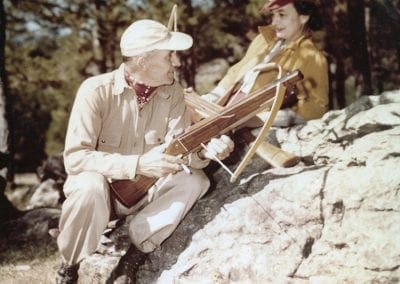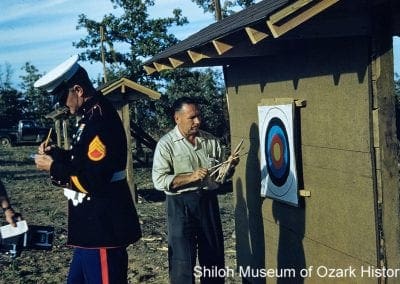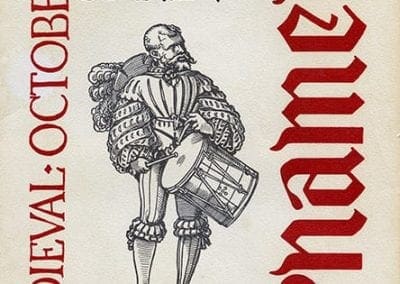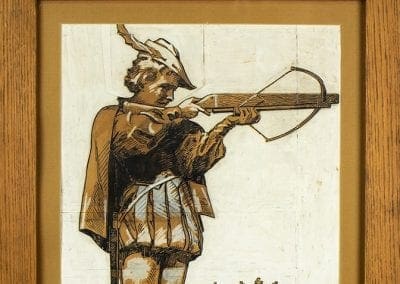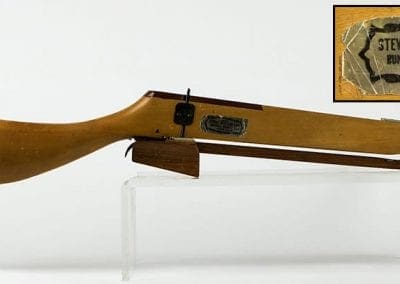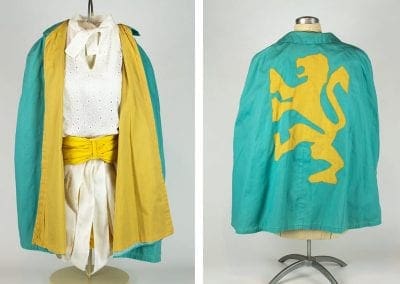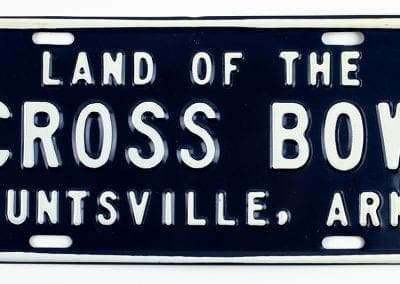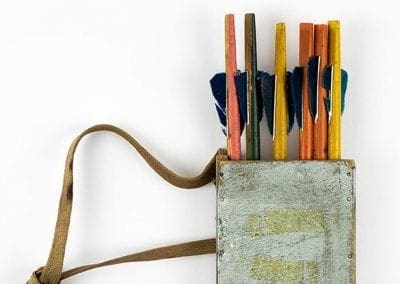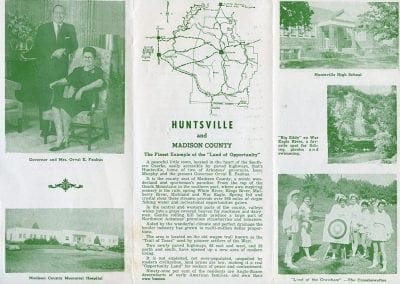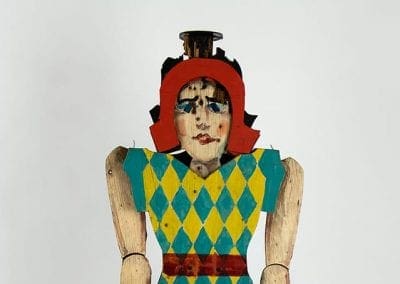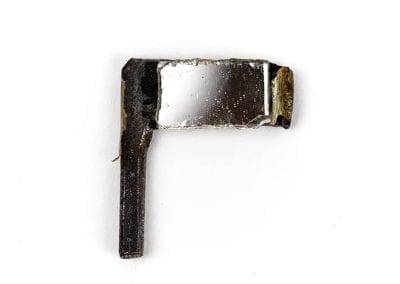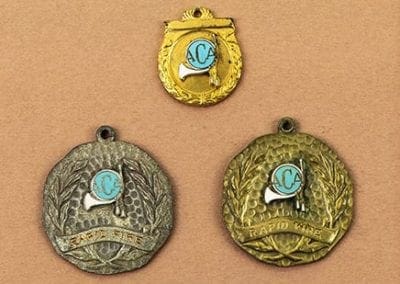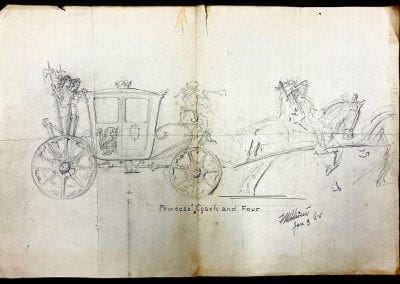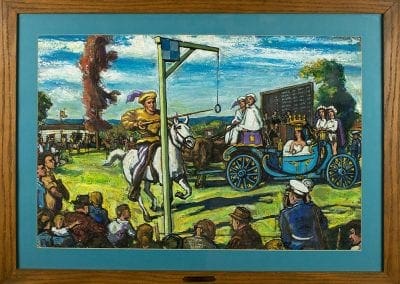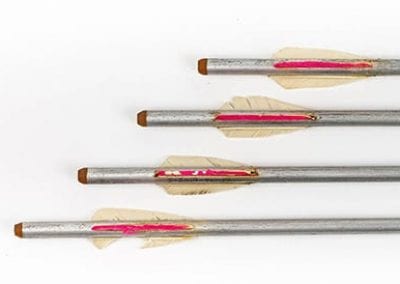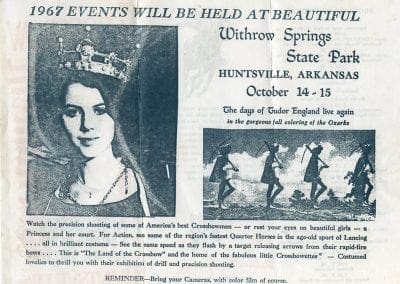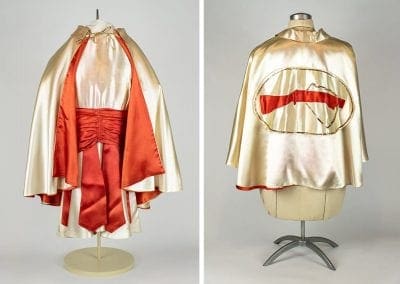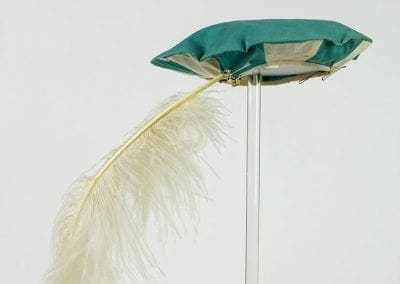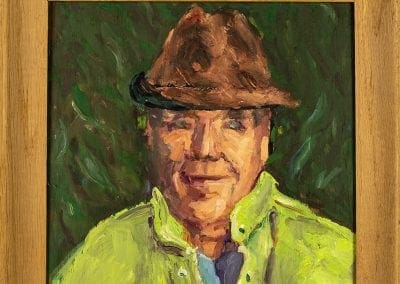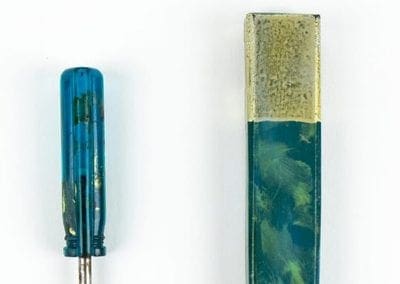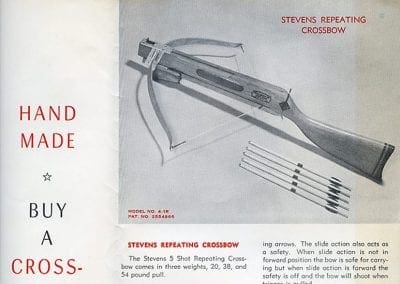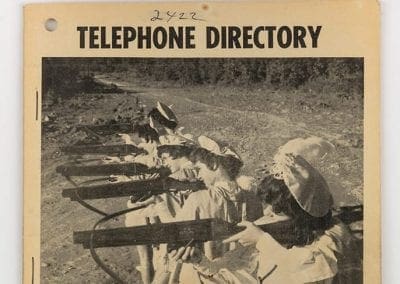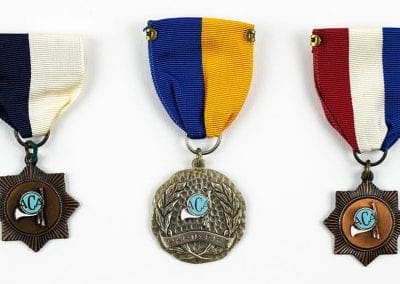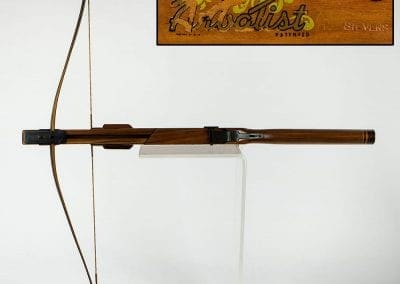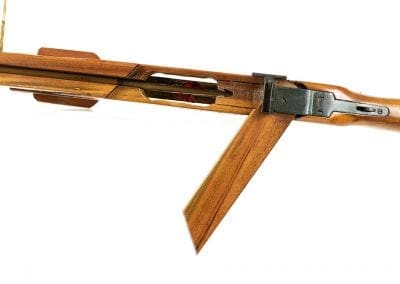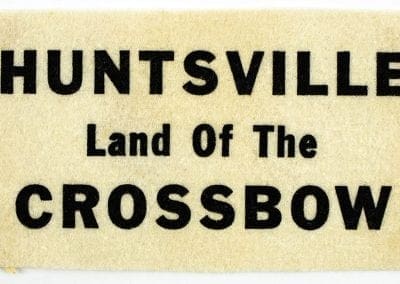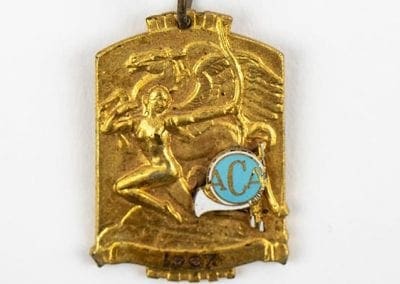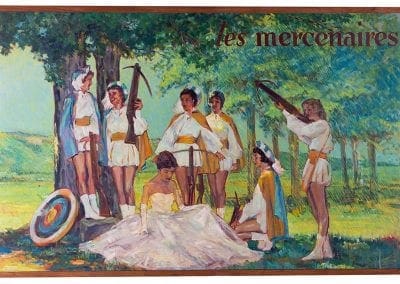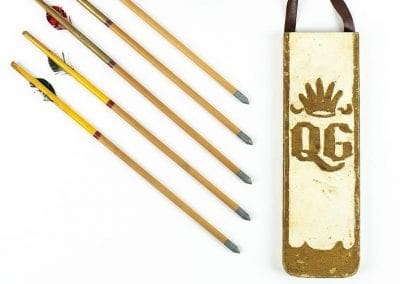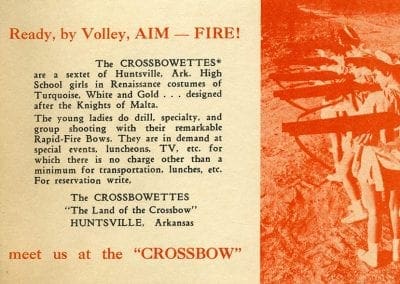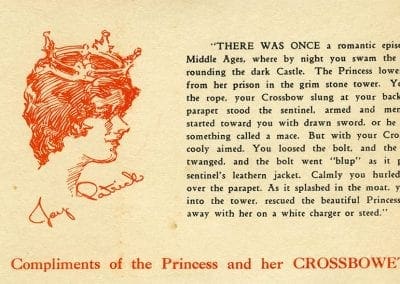Huntsville's Crossbow Tournament
Online Exhibit
Crossbowettes pose with their crossbows, October 1962. Front, from left: Susie McDonald, Linda Owens, Shirley Duncan, Diane McKinney, and Juanita Thompson. Seated in coach: 1961 Queen Joy Patrick. Dorothy Dyer Roberts Collection (S-2019-59)
Organized by George M. Stevens, the first National Crossbow Tournament was held in 1954 at Blanchard Springs in north-central Arkansas. Stevens was an artist, inventor, and crossbow maker who was enthralled with the weapon’s history and the romance of medieval times. Seeing a good thing, Huntsville druggist and crossbow enthusiast Arlis Coger and other civic leaders worked to lure Stevens and the tournament to town, which was soon dubbed “Land of the Crossbow.” They hoped the tourney would become a signature tourist event like War Eagle’s craft fair and Eureka Springs’ folk festival. In October 1958 the medieval-themed event was held on Governor’s Hill, overlooking Huntsville. It featured costumed contestants, competitions, a queen and her court, and precision crossbow shooting by the Crossbowettes.
The Crossbowette team was made up of Huntsville High School girls wearing eye-catching blue-and-gold costumes. Organized by Stevens, not only did they perform and help with the tournament, they were community ambassadors, appearing in parades and giving crossbow demonstrations. Stevens once said, “Whether people watch the show because of the pretty girls or the crossbows we’ve never been sure.” Each year one of them was crowned queen. The girls trained on the crossbow with Stevens and Coger and learned military drills from Mike Zotti, a high school science teacher. Special tricks included shooting at balloons fastened to a revolving wheel or placed inside a mechanical dragon’s mouth, which opened and closed. Other tricks included using a small mirror mounted on the crossbow to aim backwards at a target, “playing a song” by shooting at targets wired to chimes, and shooting at an apple or a glass Christmas ornament placed on the head of William Tell’s “son,” a small, colorfully painted wood figure.
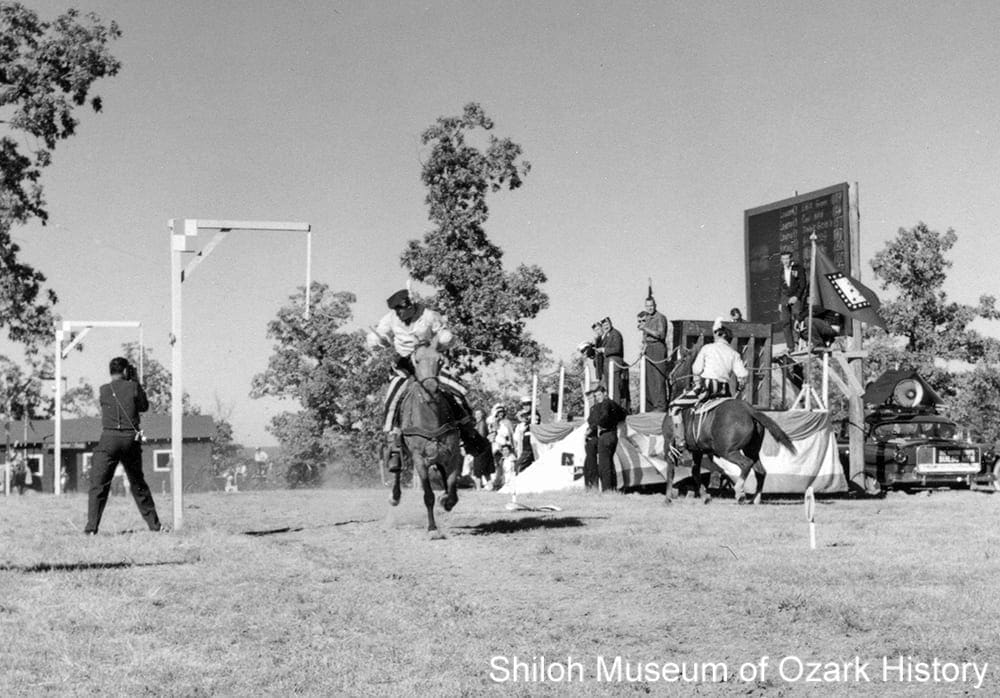
Lancer in action on Governor’s Hill, Huntsville, October 1959. Bruce Vaughan, photographer. Mary Maestri Vaughan Collection (S-2015-98-84)
Another group of costumed performers were the Lancers. Members of local riding clubs, the Lancers escorted the Crossbowettes and the queen during parades and into the tournament grounds. They provided thrilling entertainment too, using long wood lances to spear small rings hanging from posts while riding at full gallop. Inventor of the repeating crossbow, Stevens sold handmade and factory-made crossbows during the tournament, as well as feathered bolts (arrows) made by his wife Dolly. Tournament visitors were treated to speeches, live music, and competitions held by the American Crossbow Association (ACA). Medals were awarded at a banquet held at the Crossbow Restaurant, which was decorated with paintings done by Stevens.
After the tournament’s initial years, visitor attendance lessened. The tournament moved to nearby Withrow Springs State Park in 1966. The following year was the last for the Crossbowettes and Lancers. The ACA competition continued, minus the pageantry, through 2003.

Crossbowettes pose with their crossbows, October 1962. Front, from left: Susie McDonald, Linda Owens, Shirley Duncan, Diane McKinney, and Juanita Thompson. Seated in coach: 1961 Queen Joy Patrick. Dorothy Dyer Roberts Collection (S-2019-59)
Organized by George M. Stevens, the first National Crossbow Tournament was held in 1954 at Blanchard Springs in north-central Arkansas. Stevens was an artist, inventor, and crossbow maker who was enthralled with the weapon’s history and the romance of medieval times. Seeing a good thing, Huntsville druggist and crossbow enthusiast Arlis Coger and other civic leaders worked to lure Stevens and the tournament to town, which was soon dubbed “Land of the Crossbow.” They hoped the tourney would become a signature tourist event like War Eagle’s craft fair and Eureka Springs’ folk festival. In October 1958 the medieval-themed event was held on Governor’s Hill, overlooking Huntsville. It featured costumed contestants, competitions, a queen and her court, and precision crossbow shooting by the Crossbowettes.
The Crossbowette team was made up of Huntsville High School girls wearing eye-catching blue-and-gold costumes. Organized by Stevens, not only did they perform and help with the tournament, they were community ambassadors, appearing in parades and giving crossbow demonstrations. Stevens once said, “Whether people watch the show because of the pretty girls or the crossbows we’ve never been sure.” Each year one of them was crowned queen. The girls trained on the crossbow with Stevens and Coger and learned military drills from Mike Zotti, a high school science teacher. Special tricks included shooting at balloons fastened to a revolving wheel or placed inside a mechanical dragon’s mouth, which opened and closed. Other tricks included using a small mirror mounted on the crossbow to aim backwards at a target, “playing a song” by shooting at targets wired to chimes, and shooting at an apple or a glass Christmas ornament placed on the head of William Tell’s “son,” a small, colorfully painted wood figure.

Lancer in action on Governor’s Hill, Huntsville, October 1959. Bruce Vaughan, photographer. Mary Maestri Vaughan Collection (S-2015-98-84)
Another group of costumed performers were the Lancers. Members of local riding clubs, the Lancers escorted the Crossbowettes and the queen during parades and into the tournament grounds. They provided thrilling entertainment too, using long wood lances to spear small rings hanging from posts while riding at full gallop. Inventor of the repeating crossbow, Stevens sold handmade and factory-made crossbows during the tournament, as well as feathered bolts (arrows) made by his wife Dolly. Tournament visitors were treated to speeches, live music, and competitions held by the American Crossbow Association (ACA). Medals were awarded at a banquet held at the Crossbow Restaurant, which was decorated with paintings done by Stevens.
After the tournament’s initial years, visitor attendance lessened. The tournament moved to nearby Withrow Springs State Park in 1966. The following year was the last for the Crossbowettes and Lancers. The ACA competition continued, minus the pageantry, through 2003.
947-1
George and Katharine B. “Dolly” Stephens, probably taken at Blanchard Springs, about 1956. Patsy Laird Vaughan Collection (S-2019-33)
166
Arlis Coger gathers his crossbow bolts while a Marine sergeant tallies the score on Governor’s Hill, Huntsville, October 1958. Floyd Roberts, photographer. Dorothy Roberts Dyer Collection (S-2019-59)
crossbowettes
Crossbowettes in action on Governor’s Hill, Huntsville, October 1965. From left: Trudy Gaskill, Kathy Counts, Karen Smith, and Chris Smith. Chris Smith Royston Collection (S-2019-77)
Artifact Gallery
2019-33-3
Crossbowette drawing by George Stevens, circa 1960. Used on the cover of several early tournament programs. Patsy Laird Vaughan Collection (S-2019-33)
2019-25-1
Commercial crossbow made by the Stevens Crossbow Manufacturing Company and purchased by J.R. Howard, early 1960s. With close-up of manufacturer’s label. Kathy Counts Howard and J. R. Howard Collection (S-2019-25-1)
2019-35-1
Crossbowette uniform worn by Judy Karnes, 1966-1967. Judy Karnes Cotton Collection (S-2019-35-1)
2019-48-1
Quiver originally used by Sharon Fancher, 1958-1959, and bolts. Butch Watson Collection (S-2019-48)
2019-33
William Tell’s “son,” a figure used during trick shooting by the Crossbowettes, 1960s. An apple or glass Christmas ornament was placed as a target on top of his head. Patsy Laird Vaughan Collection (S-2019-33)
mirror
Mirror placed on crossbow and used when aiming backwards during trick shots, 1960s. Patsy Laird Vaughan Collection (S-2019-33)
2019-33-9
Patsy Laird’s crossbow competition medals, 1960-1970. Patsy Laird Vaughan Collection (S-2019-33)
coach
George Steven’s sketch for a “Princess’ Coach,” 1956. Doris Ann Coger Kisor Collection (S-2019-46)
2019-33-4
Lancers painting by George Stevens, 1960s-1970s. Patsy Laird Vaughan Collection (S-2019-33)
2019-33-1
Crossbow Starlet uniform worn by Patsy Laird, 1961. The Starlets were a short-lived group started by Springdale businessman Paul Peavy to promote his company’s crossbow sales. Patsy Laird Vaughan Collection (S-2019-33)
2019-50
Crossbowette hat first worn by Joy Patrick, 1958-1961, and later by Chris Smith, 1965-1967. Chris Smith Royston Collection (S-2019-5)
loan-1
Portrait of Arlis Coger, painted by George Stevens, 1960s-1970s. Coger was instrumental in bringing the Crossbow Tournament to Huntsville. Courtesy Doris Ann Coger Kisor
2019-56
Screwdriver and holder used by Nancy Smith to tighten her crossbow during competition, 1967. Nancy Smith Marsh Collection (S-2019-56)
2019-46
Crossbow Tournament medals won by Arlis Coger, 1970s. Doris Ann Coger Kisor Collection (S-2019-46-2, S-2019-46-1, S-2019-46-3)
2019-33-5
Handmade crossbow made by George Stevens, 1960s, with close-up of manufacturer’s label. Patsy Laird Vaughan Collection (S-2019-33)
2019-33-6
Loading mechanism on handmade crossbow made by George Stevens, 1960s. Patsy Laird Vaughan Collection (S-2019-33)
2019-48-2
Crossbow Tournament medal (Mounted Division) won by Butch Watson, 1967. Butch Watson Collection (S-2019-48)
loan-2
Les Mercenaires (The Mercenaries), painted by George Stevens, about 1960. Featuring Crossbowette and 1960 tournament queen Doris Ann Coger in white dress. Courtesy Doris Ann Coger Kisor
2019-33-2
Crossbowette quiver with bolts, late 1950s-1960s. Patsy Laird Vaughan Collection (S-2019-33)
Shiloh Museum photo archivist Marie Demeroukas presented this slide program during a reunion of the Crossbowettes on November 15, 2020.
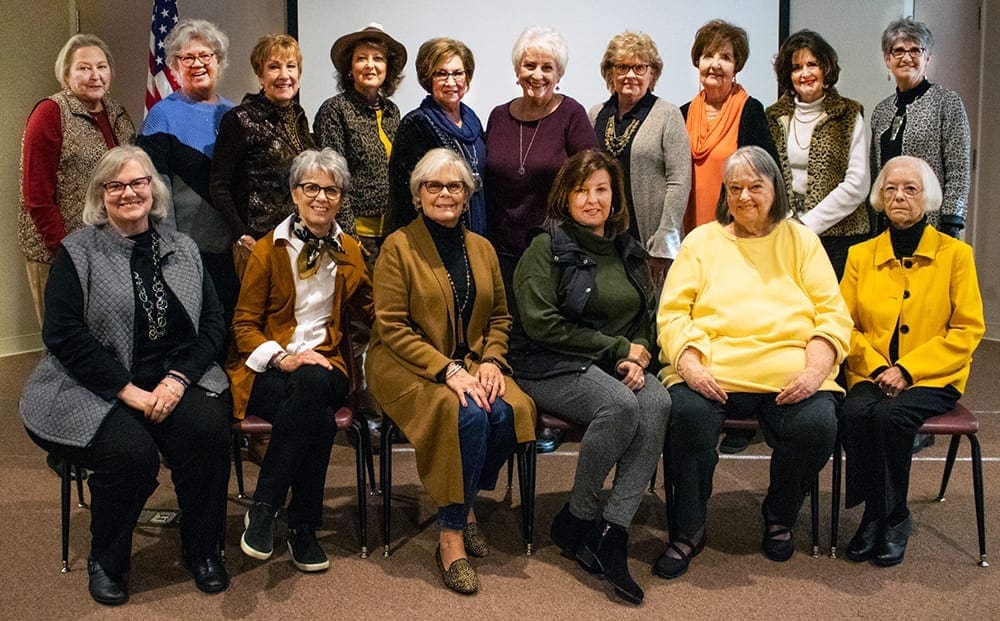
Crossbowette reunion, Shiloh Museum of Ozark History, November 15, 2019. Back, from left: Sue Ellen McDonald Montgomery, Judy Karnes Cotton, Diane McKinney Johnson, Shirley Duncan Franklin, Juanita Thompson Shepherd, Linda Owens Womack, Kathy Counts Howard, Doris Ann Coger Kisor, Joy Patrick Parrott, and Chris Smith Royston. Front, from left: Nancy Smith Marsh, Trudy Gaskill Karnes, Karen Smith Croxdale, Claudette Elzey Shrum, Pat Woollen Wusnack, and Barbara Fowler Robinson.
Know Your Crossbowettes

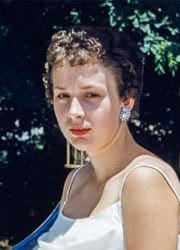
1958 Queen
Nancy Dryer
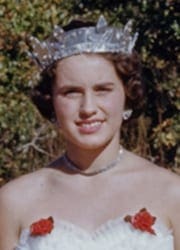
1959 Queen
Margaret Jane Fitch
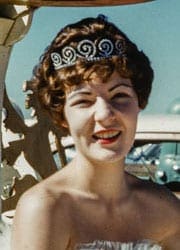
1960 Queen
Doris Ann Coger
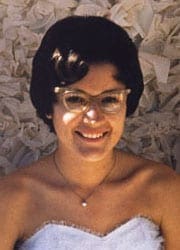
1961 Queen
Joy Patrick
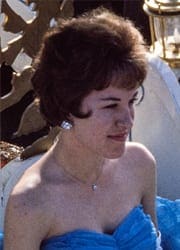
1962 Queen
Charlotte McBee

1963 Queen
Linda Owens
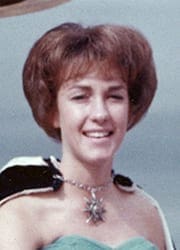
1964 Queen
Diane McKinney
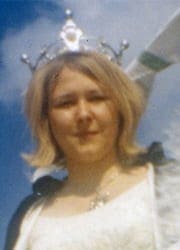
1965 Queen
Susie McDonald
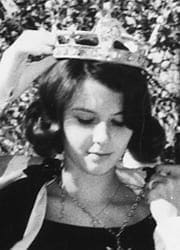
1966 Queen
Trudy Gaskill
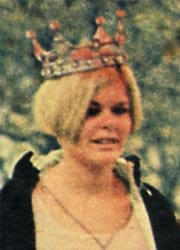
1967 Queen
Karen Smith

![]()

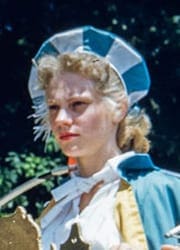
Angela Sanders
1958
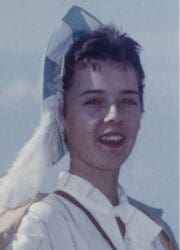
Barbara Fowler
1959
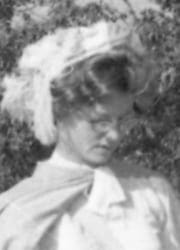
Beverly Alverson
1962
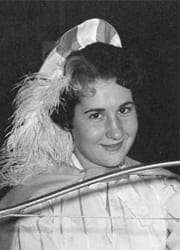
Carolyn Bolinger
1960

Charlotte McBee
1960-1962
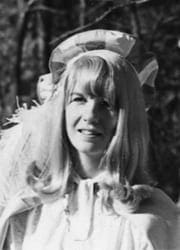
Chris Smith
1965-1967
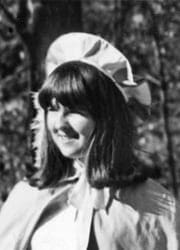
Claudette Elzey
1966-1967

Diana Turner
1961
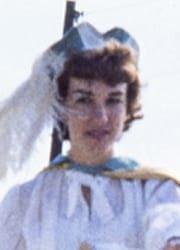
Diane McKinney
1961-1964
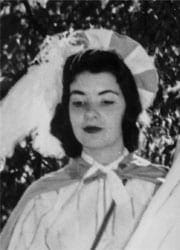
Doris Ann Coger
1958-1960
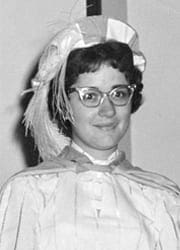
Joy Patrick
1958-1961
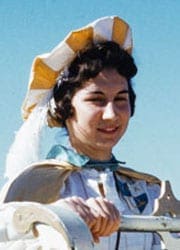
Juanita Thompson
1961-1963
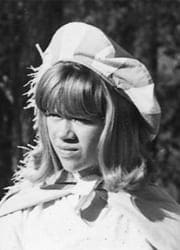
Judy Karnes
1966-1967
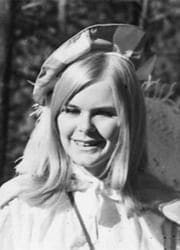
Karen Smith
1965-1967

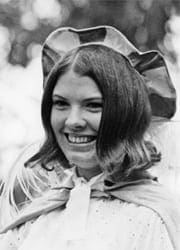
Kathy Counts
1965-1967
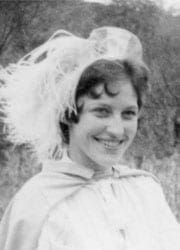
Linda Owens
1961-1963
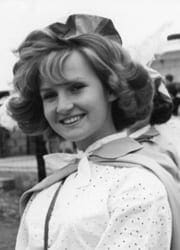
Marie Ann Mowery
1963-1964
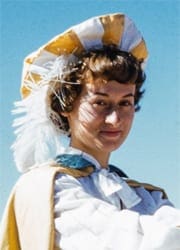
Mary Fancher
1961
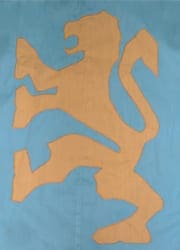
Nancy Smith
1967
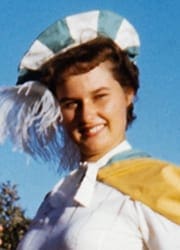
Pat Woollen
1958-1960
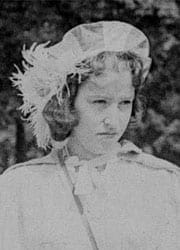
Patsy Edmisten
1959-1960
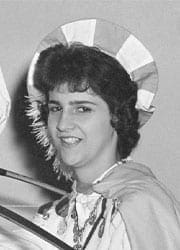
Patsy Laird
1959-1960
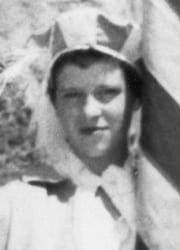
Patsy Sutton
1958
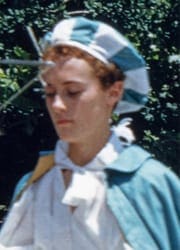
Sharon Fancher
1958-1959
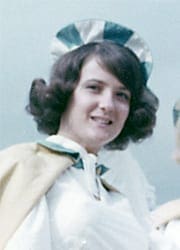
Shirley Duncan
1961-1964
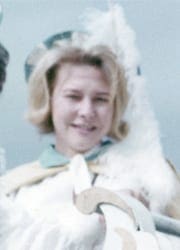
Susie McDonald
1962-1964
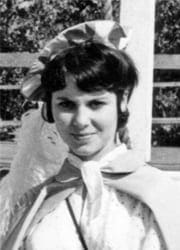
Trudy Gaskill
1964-1966

Crossbow Tournament Home Movies
The 1956 home movie was made by Arlis Coger, and is courtesy of his daughter, Doris Ann Coger Kisor. The 1958–1963 movies were made by Floyd Roberts, and are courtesy of his daughter, Dorothy Roberts Dyer. Both men were from Huntsville, Arkansas.

